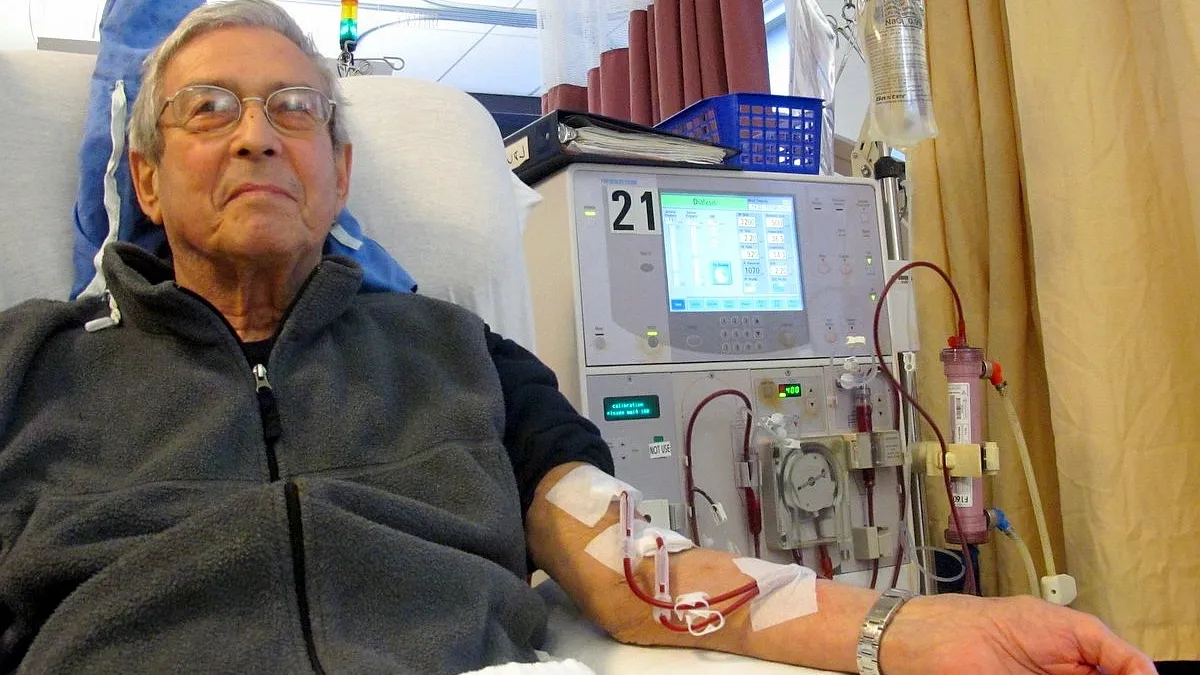Dive Brief:
- A new study from Harvard Medical School found adults over 65 who start dialysis tend to have higher mortality rates than are reported by the U.S. Renal Data Registry, the most common source for statistics on end-stage kidney disease patients.
- The analysis of outcomes data for 391 Medicare patients showed that more than half who started dialysis died within a year, and almost one in four died within a month of beginning treatment.
- Results of the study, by Harvard, Brigham and Women’s Hospital, Veterans Affairs Boston Healthcare System, Icahn School of Medicine at Mount Sinai and other institutions, were published this month in JAMA Internal Medicine.
Dive Insight:
The death rates for dialysis patients in the study were almost twice as high as mortality statistics from the U.S. Renal Data Registry maintained by the National Institutes of Health, the researchers said. Lead author Melissa Wachterman, an assistant professor of medicine at Harvard Medical School, called the data "sobering" and suggested that spending the better part of three days a week doing dialysis may not be the right choice for everyone.
One important difference between the Harvard study and the Renal Data Registry is that 73% of patients in the Harvard analysis began their dialysis while in the hospital. The registry data includes only patients well enough to receive dialysis outside of the hospital.
In the Harvard study, 68 patients were 85 years or older, 89 required assistance with daily activities and 267 had four or more major medical problems. Nearly 23% of patients died within a month of starting dialysis, nearly 45% died wiithin six months, and nearly 55% died within the year.
The highest death rates were seen among those over age 85, those with four or more major medical problems in addition to kidney failure, those who started dialysis in the hospital, and those needed help with basic tasks such as eating and bathing.
By comparison, the Renal Data Registry shows a mortality rate of about 30% among older adults starting dialysis.
More than 120,000 people in the United States started dialysis in 2015, with half older than 65. Companies such as Fresenius, a maker of hemodialysis machines, are working to improve treatments and reduce complications that can increase mortality risk.
Last month, Fresenius received FDA breakthrough status for software the company is developing to improve fluid management during dialysis. Over-hydration during hemodialysis increases the risk of mortality.
In January, Singapore-based AWAK Technologies gained breakthrough device designation for a wearable, portable peritoneal dialysis device that offers an alternative to long hours of connection to a large dialysis machine. With peritoneal dialysis, the lining of the abdominal cavity acts as a filter to cleanse the blood.
The Harvard researchers noted that a conservative approach to managing kidney failure in which patients receive medications and other therapies without starting dialysis is well established in the United Kingdom and other countries. The approach has not been adopted as a common model of care in the United States, they said.










